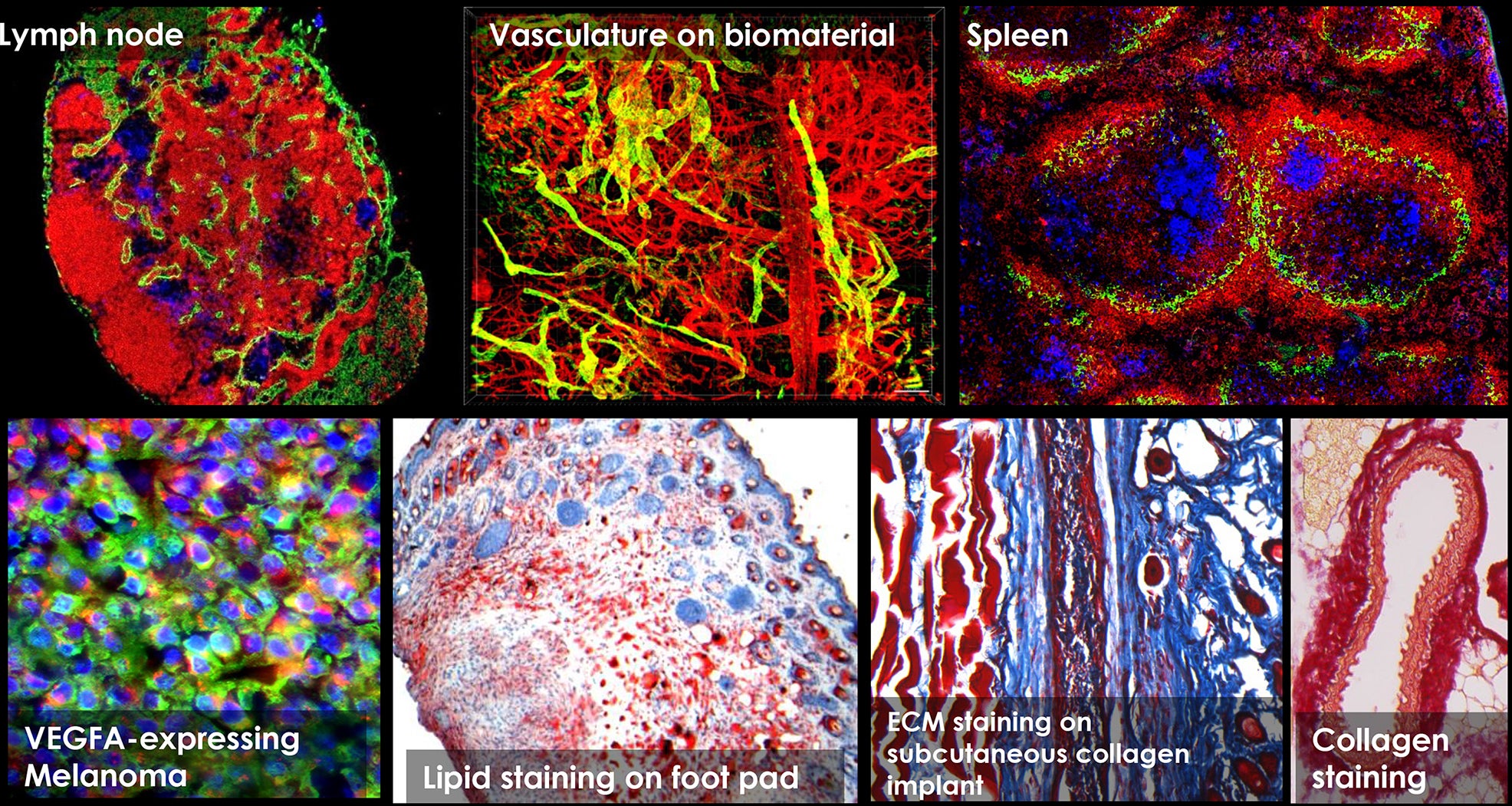Histology Core Facility

About the Histology Core Facility
The mission of our histology Core is to provide technical and educational services. The Core offers standard and customized research-specific histology services on a wide variety of tissues samples and staining techniques depending on research questions.
The (immune)histological study can be performed either by the investigator under the supervision of the Core staff or the Core Staff. The Histology Core works with the LSI advanced imaging laboratory and electromicroscopy unit and depending on researcher’s interest, we will be able to refer researchers to these core facilities.
Services
Histology
Histology related services include:
- Isolation of cells, tissue and/or organs.
- Tissue Fixation at optimal fixation time.
- Tissue processing, embedding and cryosectioning (paraformaldehyde (PFA)-fixed or frozen).
- Bone Decalcification and sectioning (PFA fixed or frozen).
- Tissue embedding in OCT blocks (fresh or fixed tissue) for cryostat sectioning
- Formalin fixed paraffin embedding service.
- Cells processing for frozen sectioning.
- Tissue sectioning by Cryostat at standard or customized thickness depending research’s question.
- Mounting sections on positively charged slides or any other treated slides of your choice.
- Processing biopsy, tumour tissues for PFA-fixed sectioning.
Histology
- Haematoxylin and Eosin staining: Common staining methods for histological assessment.
- Elastin van Gieson Staining: For visualization of elastic fibers in tissue sections. Nuclei can be stained with Weigert’s acid-fast iron hematoxylin.
- Oil Red O staining: To stain triglycerides and lipids. It is often used together with a nuclear counterstain, hematoxylin and elastic fiber counterstain.
- Picrosirius red staining: For visualization of collagen I and III fibers in tissue.
- Masson Trichrome Staining: To identify muscle, collagen fibers, fibrin and erythrocytes in tissue sections.
Immunohistochemistry
The process of incubating tissue sections/cells with specific antibodies to form antigen-antibody complex for the detection of targeted antigen. Detection is commonly achieved by using a colorimetric reaction or a fluorescent signals. Multiple labelling techniques such as direct, indirect and indirect with signal amplification are available. These techniques can be applied to both thin cross-section (<10um) to thick cross-section (~200um) or tissue whole mount staining.
- Colorimetric staining
- Immunofluorescent staining
- Opal multiplex immunohistochemistry
Education
Customized training is provided to meet specific needs of researchers. We also provide troubleshooting of various staining for your samples and discussion on best histological methods to address your research questions.
List of equipment
- Cryostat Leica CM3050S
- Cryostat ThermoFisher NX50
- Leica TP1020 tissue processor
- Leica RM2255 Fully Automated Rotary Microtome
- Arcadia H heated embedding module
- Arcadia C cold plate
Charges
LSI histology charges include charges for reagents, services and slides containers for storage before analysis. Pricing for training packages, available antibodies and histology price will be updated on this PPMS soon.
For advanced histology and staining, the service charge depend on the nature of protocol, the complexity of the procedure and the number of specimens.
To enquire more about the services at LSI Histology Core, please contact Miss Syaza Hazwany Mohammad Azhar or Dr Lim Hwee Ying at lsibox13@nus.edu.sg .

